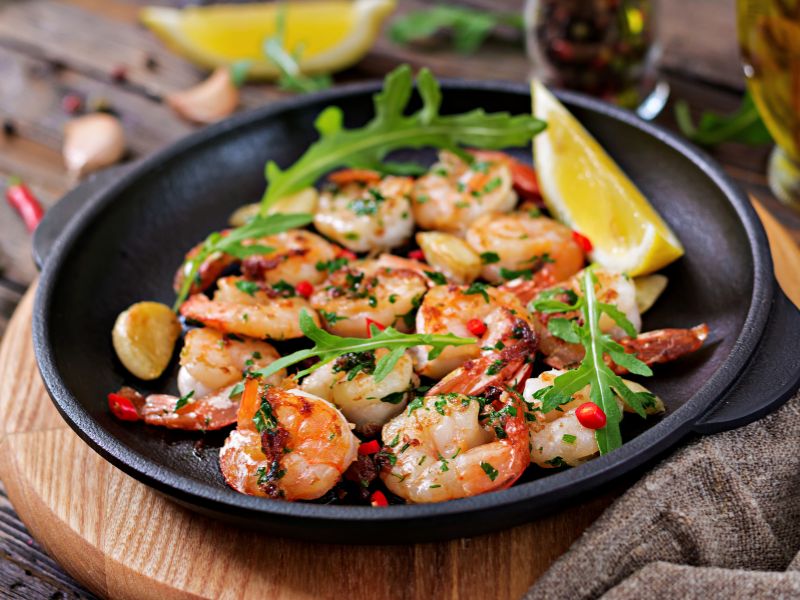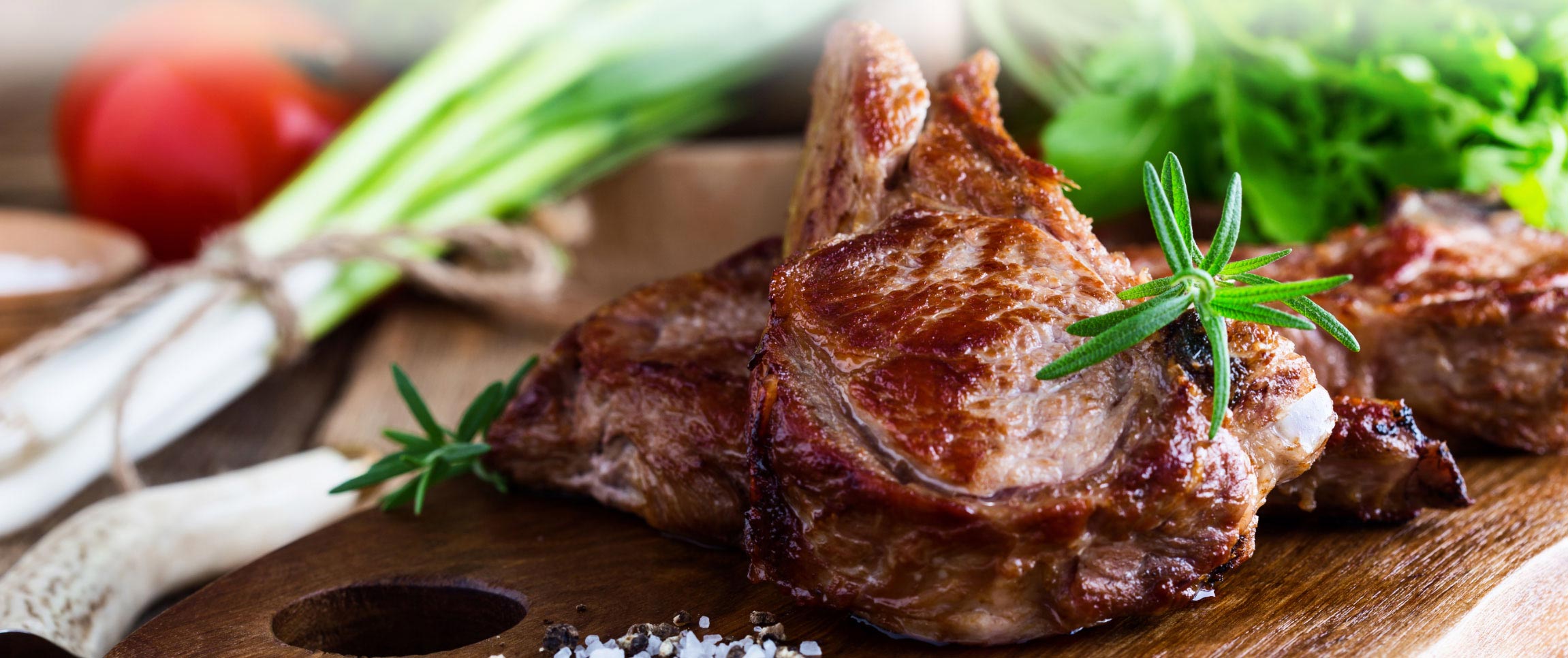Traditional veal can come from any young cow up to 9 months of age, however, most veal comes from calves at 8-16 weeks of age, and usually at a size of 400 to 500 pounds.
Veal meat is considered to be mild in flavor with a light pink color and a very low fat level. Little, if any, marbling occurs. Calves are traditionally fed formula which maintains veal’s light color and delicate flavor. An interesting fact to note is that since Dairy Cows must give birth in order to produce milk, veal is often a by-product of the dairy industry.
Another type of veal, Bobby Veal, is still mild in flavor and light pink in color. While this product does fit some restaurant price points, it is not considered to be the best.
Red Veal refers to the darker red color of the meat and the presence of marbling in the meat. This occurs because the animal is now eating grain and grass as part of its diet instead of only formula. This product is also much cheaper in cost than traditional veal.
The Breakdown
Veal, when slaughtered, is split into a foresaddle and hindsaddle portion. This split occurs between the 11th and 12th rib section. Three primals come from the foresaddle: shoulder, foreshank and breast, and finally the rib. The hindsaddle yields two primals: the loin and the leg.
Shoulder
This is also known as the chuck and is considered to be a tougher section of veal. This is due to the muscle group being worked more by the animal, thus producing denser connective tissue. Often this area is ground or cut into stew meat. Also from this area come cubed veal slices, which is a cheaper alternative to leg cuts, and foreshank osso bucco. This osso bucco has the same flavor profile as hindshank but is $4.00 to $5.00 cheaper per pound. The foreshank yields consistent form and size when compared to the hindshank.
Try it out: Veal Patties with Hunters Sauce
Foreshank & Breast
Meat from this area is considered to be tougher for the same reasons as the shoulder. Veal short ribs come from this area, which are a popular alternative to beef short ribs. The breast can be cubed for steaks and stew meat. It also can be stuffed, rolled and tied, then braised to tenderize.
Try it out: Veal Cordon Bleu
Rib
The whole double rib is referred to as a hotel rack or bracelet. The meat from this area is very tender and can be cooked with any method. This is the area that produces Veal Rib Chops - one of the more popular cuts. Also, veal short tenderloin comes from this area as well as a veal rib eye.
Try it out: Stuffed Veal Rib Chops with Truffle Oil
Loin
This area is very tender because of low muscle development. The veal tenderloin comes from this area. The short tenderloin remains in the primal veal loin section. The Butt Tenderloin is a part of the veal sirloin. The tenderloin is sometimes removed and cut into medallions. Also veal loin chops which contain a piece of the tenderloin and strip loin are fabricated from this area. The veal loin chop is much cheaper per lb than the veal rib chop mentioned above. A boneless strip loin can be obtained from this area to produce veal strip loin steaks.
Leg
Contains both the sirloin and the leg section. The leg can be roasted whole due to its tenderness and can be used on a carving station. More commonly, the leg is used to fabricate a wide variety of leg cutlets. Produced from the leg are shank meat (which is used for stew), knuckle meat ( which can produce leg slices), eye of the round, butt tenderloin, bottom round, top round and sirloin. Also, hind shank osso bucco is fabricated from this area. The finest leg cutlet is known as a hip cutlet.
Try it out: Veal Marsala and Veal Kebabs
Offal
Organ meats from veal often used in foodservice are sweetbreads, kidney and liver.
Try it out: Calf's Liver with Onions
Bottom Line
Veal is a fantastic menu item with cuts that range in price to meet any foodservice operations menu price point. The next time you are trying to find a new meat item for your menu consider veal. Your Performance Foodservice sale representative will find the perfect cut at the perfect price point to create a profitable new menu item.



